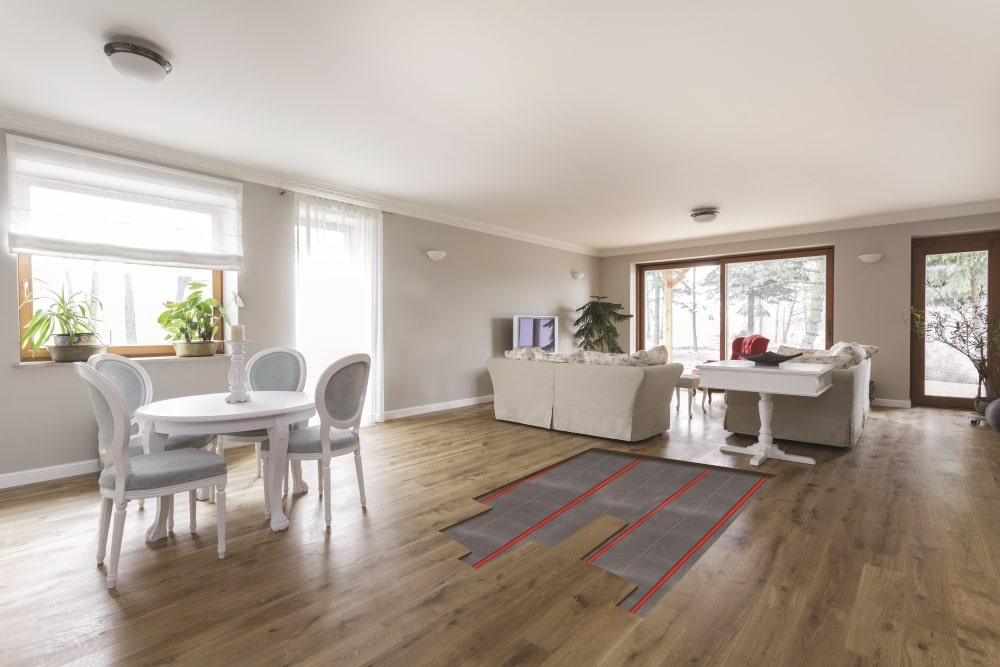
Differences between Timber and Engineered Wood Flooring
Whilst both timber flooring and engineered wood flooring can be used with an underfloor heating system, the differences in their density and moisture content values can lead to different heating requirements.
Timber
When we refer to timber, we generally mean natural hardwood – that is wood that has been cut and treated specifically for flooring and most commonly produced as floorboards. When considering installing floor heating with a timber floor finish, the quality of the timber is very important. Quarter-sawn timber is the best choice as it has been cut in such a way that when it absorbs moisture, it is unlikely to bow or warp.
Engineered wood
Engineered wood is a man-made product that often utilises a hardwood timber finish on top of a plywood inner core. All engineered wood is designed to limit the growth and shrinkage caused by moisture in the atmosphere but due to the softer wood core, cheaper engineered wooden flooring can swell over time, in some cases causing a failure of the floor heating system. It’s always best to talk with your flooring supplier about the suitability of using your chosen floor finish with underfloor heating.
The Qualities of Timber when used with Underfloor Heating
As a natural material, timber is affected by its surrounding environment and there are some key things to think about when installing an underfloor heating system with timber floors.
Ideal Thickness
The thickness and density of timber flooring can impact on the performance of the system and we recommend that timber thickness should be no more than 18mm. Also, as wider timber boards will often show more movement than more narrow boards, we recommend that the ratio of thickness to width should be in the region of 7 to 11. A board with a thickness of 16mm and width of 160mm would give a ratio of 10, so is ideal.
Thermal Conductivity
It is typically recommended that a maximum floor surface temperature of 27°C should not be exceeded for timber flooring but this not strictly accurate. This temperate instruction is based on historic research exploring growth and shrinkage rates of timber floors and it was at 27°C that the expansion of timber tested was deemed ‘invisible’ to the naked eye. This temperature is now an industry-wide recommendation, but timber floors can be heated to a higher level if necessary, however if your flooring supplier recommends a maximum surface temperature of 27°C then you should follow this advice.
You can secure the temperature restriction of the timber floor using a Warmup Thermostat that accurately controls the underfloor heating system to provide you with an optimally heated room. As part of your project you should also always get a heat loss calculation done in order to ensure that underfloor heating meets the room heating requirement.
Expansion and Contraction
All wood is hygroscopic, meaning it absorbs moisture from around it and this moisture causes both timber and engineered wood to naturally expand and contract over time. This moisture content can vary depending on what kind of timber you choose and the environment of where your floor-heating project is located. With the changing seasons a timber floor will grow and shrink minutely as the indoor humidity changes. If installed incorrectly, this swelling and contraction of a timber floor can impact on the responsiveness of a floor heater.
Retrofitting Underfloor Heating with Suspended Timber Floors
Suspended timber floors are a common structural element in many period properties and we offer a range of floor heating systems specifically designed for suspended timber floors.





